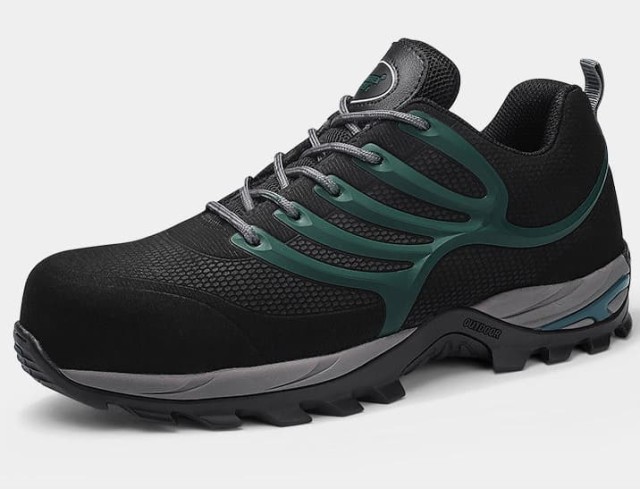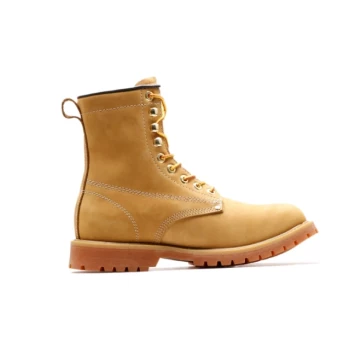The right work boot upper material does more than protect against surface hazards—it actively prevents chronic foot damage by addressing moisture, impact, and structural stress. Here's how material science creates safer, more comfortable footwear for demanding jobs.
The Physiology of Foot Stress in Work Environments
Work environments create unique foot stressors that ordinary shoes can't mitigate. Research shows three key factors drive occupational foot injuries:
Moisture Accumulation and Microbial Risks
- Prolonged moisture exposure softens skin, increasing blister risks by over 60%
- Damp conditions enable fungal/bacterial growth (a leading cause of athlete's foot in industrial workers)
- Solution: Breathable uppers (like perforated leather or moisture-wicking synthetics) reduce internal humidity by allowing vapor escape
Impact of Repetitive Motion on Arch Integrity
- Workers walking 8+ hours/day experience 3x higher rates of plantar fasciitis
- Rigid materials force unnatural foot flexion, while overly flexible uppers lack support
- Solution: Structured yet pliable materials (e.g., oil-tanned leather) provide dynamic arch reinforcement
Material Innovations for Occupational Demands
Modern work boot uppers combine protection and physiology-aware design:
Leather's Cellular Structure vs. Synthetic Breathability
| Material | Key Advantage | Ideal For |
|---|---|---|
| Full-grain leather | Natural pore structure regulates temperature | Construction, oil/gas work |
| Microfiber | 40% lighter weight with equal abrasion resistance | Healthcare, warehousing |
Reinforced Zones for Hazard-Specific Support
- Metatarsal guards: Thermoplastic polyurethane (TPU) layers deflect falling objects without adding bulk
- Abrasion panels: Double-stitched leather or rubberized textiles in high-wear zones (toe box, heel)
- Chemical resistance: Nitrile-coated uppers prevent acid/solvent penetration in labs
Evidence-Based Selection Strategies
Correlation Between Breathability and Blister Prevention
- Studies indicate breathable uppers reduce blister incidence by 55-70% in humid environments
- Test method: ASTM F2913 measures vapor permeability (aim for ≥5 mg/cm²/hr)
ASTM Standards for Supportive Uppers
- Vertical compression resistance (ASTM F2412): Critical for roofing/steelwork boots
- Puncture protection (ASTM F2413): Minimum 270 lbs force resistance for waste management
Upgrade Your Safety Standards
3515's work boots integrate these material innovations for distributors and bulk buyers needing reliable, injury-preventing footwear. Our full-grain leather and advanced synthetic options deliver:
✓ 72-hour moisture management
✓ Reinforced stress zones matching OSHA/ANSI standards
✓ Customizable upper configurations for industry-specific risks
[Contact 3515] to discuss bulk orders tailored to your workforce's protection needs.
Related Products
- Wholesale Durable Safety Boots | Custom Steel Toe & Puncture-Resistant Manufacturing
- Custom Wholesale Leather Safety Boots Direct Factory Manufacturing
- Wholesale Slip-On Safety Boots Manufacturer - Custom Puncture-Proof & Steel Toe
- Durable Steel Toe Safety Boots Wholesale & Custom Manufacturing
- Wholesale Safety Footwear Manufacturer for Bulk & Custom OEM Orders
Related Articles
- Steel Toe vs. Composite Toe Boots: How to Choose the Right Safety Footwear for Your Job
- Steel Toe Boots vs. Modern Alternatives: Making the Right Safety Choice
- How Modern Steel Toe Boots Combine Safety with All-Day Comfort
- Steel Toe Work Boots: Balancing Safety and Comfort for Demanding Jobs
- Matching Men’s Work Shoe Safety Technologies to Workplace Hazards



















